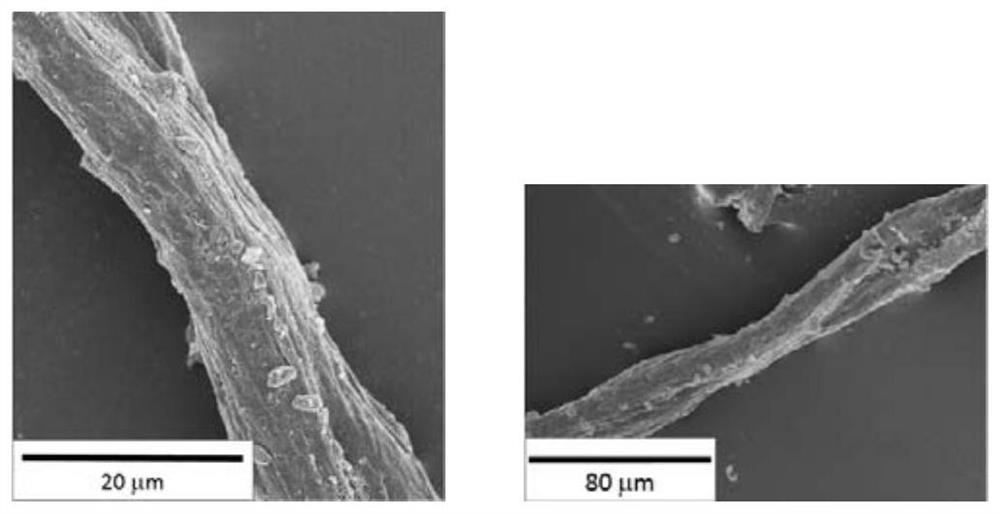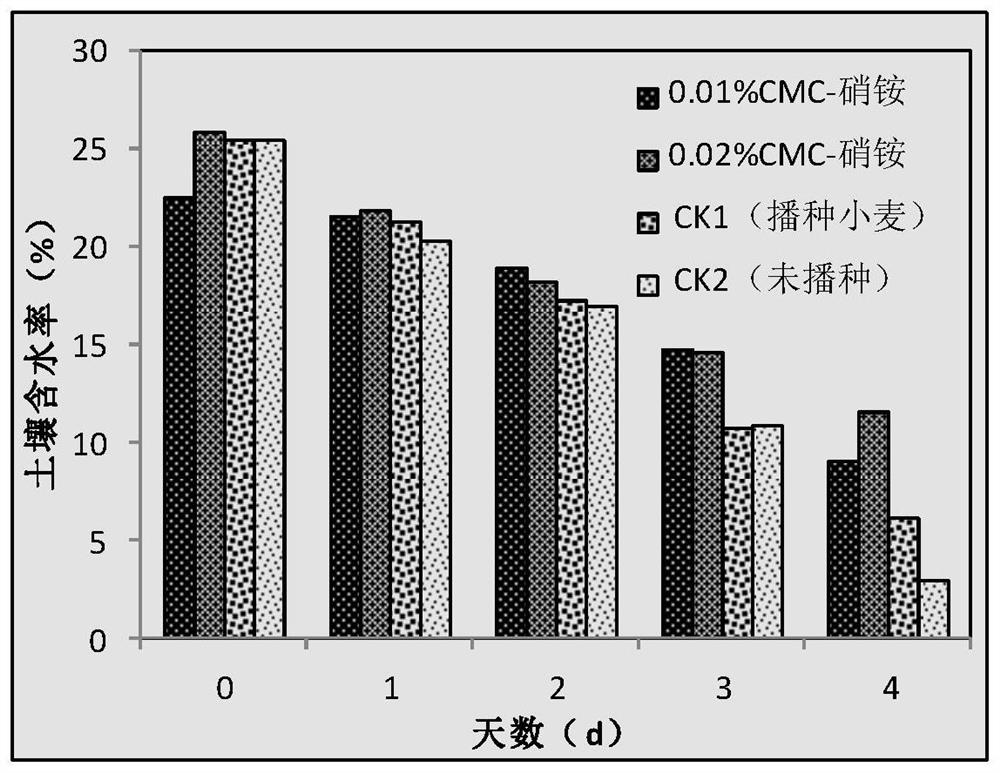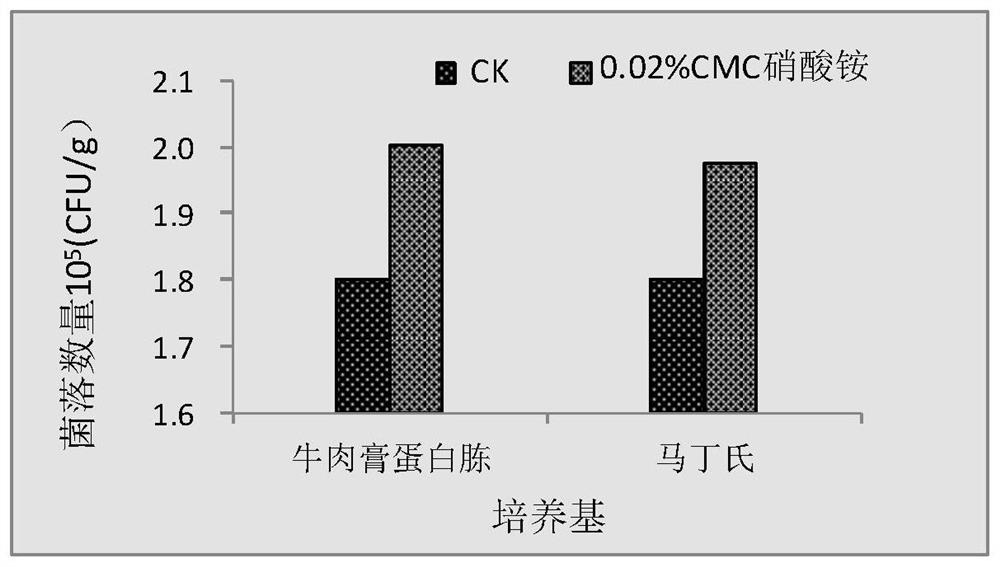A kind of cellulose derivative and its preparation method and application
A cellulose derivative and cellulose technology, applied in botanical equipment and methods, chemicals for biological control, chemical instruments and methods, etc., can solve the problem of weak soil-locking ability of roots, difficulty in controlling soil erosion, aggravation, etc. Problems, to achieve the effect of improving water retention, realizing high value-added utilization, and improving compressive strength
- Summary
- Abstract
- Description
- Claims
- Application Information
AI Technical Summary
Problems solved by technology
Method used
Image
Examples
Embodiment 1
[0041] Coniferous wood cellulose material used in the test: α-cellulose content 93.5%, degree of polymerization 1020, fineness 80 mesh, provided by Beijing North Century Cellulose Technology Development Co., Ltd.
[0042] Etherification process: 80g of coniferous wood cellulose is added into a glass reactor containing 800g of isopropanol aqueous solution with a mass concentration of 90%, and the stirred material is evenly dispersed; then adding a concentration of 26% NaOH solution into the reactor, Alkaline at 20°C for 1.5h; add 50g of 50% isopropanol solution of chloroacetic acid, heat up to 50°C, etherify for 1h, then heat up to 75°C, etherify for 30min; cool to 40°C, add glacial acetic acid / Neutralize the isopropanol solution to a pH value of 7, filter, wash, centrifuge, dry, and pulverize to obtain carboxymethyl cellulose with a certain degree of substitution, which is ready for use.
[0043] Nitrification process: add fuming nitric acid and dichloromethane into the three...
Embodiment 2
[0047] Refined cotton powder for the test: α-cellulose content 97.5%, degree of polymerization 1150, fineness 80 mesh, provided by Beijing North Century Cellulose Technology Development Co., Ltd.
[0048] Etherification process: Add 80g of refined cotton powder into a glass reactor containing 800g of isopropanol aqueous solution with a mass concentration of 85%, and stir the material to disperse evenly; then add a 27% NaOH solution to the reactor, Alkaline at ℃ for 1.5h; add 55g of 50% isopropanol solution of chloroacetic acid, raise the temperature to 50°C, etherify for 1h, then raise the temperature to 75°C, etherify for 30min; cool to 40°C, add glacial acetic acid / isopropanol Neutralize with propanol solution, filter, wash, centrifuge, dry, and pulverize to obtain carboxymethyl cellulose with a certain degree of substitution, which is ready for use.
[0049] Nitrification process: add fuming nitric acid and dichloromethane into a three-necked flask in a ratio of 40:60, stir...
Embodiment 3
[0053] Bamboo pulp cellulose material used in the test: a-cellulose content 89.5%, degree of polymerization 820, fineness 80 mesh, provided by Beijing North Century Cellulose Technology Development Co., Ltd.
[0054] Etherification process: Add 80g of bamboo pulp cellulose into a glass reactor filled with 800g of isopropanol aqueous solution with a mass concentration of 90%, and stir the material to disperse evenly; then add cellulose with a concentration of 20% to 51% into the reactor. NaOH solution, basify at 20°C for 1.5h; add 50g of isopropanol solution containing 50% chloroacetic acid, heat up to 50°C, etherify for 1h, then heat up to 75°C, etherify for 30min; cool, add glacial acetic acid / Neutralize with isopropanol solution, filter, wash, centrifuge, dry, and pulverize to obtain carboxymethyl cellulose with a certain degree of substitution, which is ready for use.
[0055] Nitrification process: add fuming nitric acid and dichloromethane into a three-necked flask in a ...
PUM
| Property | Measurement | Unit |
|---|---|---|
| degree of polymerization | aaaaa | aaaaa |
| degree of substitution | aaaaa | aaaaa |
| degree of polymerization | aaaaa | aaaaa |
Abstract
Description
Claims
Application Information
 Login to View More
Login to View More - R&D Engineer
- R&D Manager
- IP Professional
- Industry Leading Data Capabilities
- Powerful AI technology
- Patent DNA Extraction
Browse by: Latest US Patents, China's latest patents, Technical Efficacy Thesaurus, Application Domain, Technology Topic, Popular Technical Reports.
© 2024 PatSnap. All rights reserved.Legal|Privacy policy|Modern Slavery Act Transparency Statement|Sitemap|About US| Contact US: help@patsnap.com










